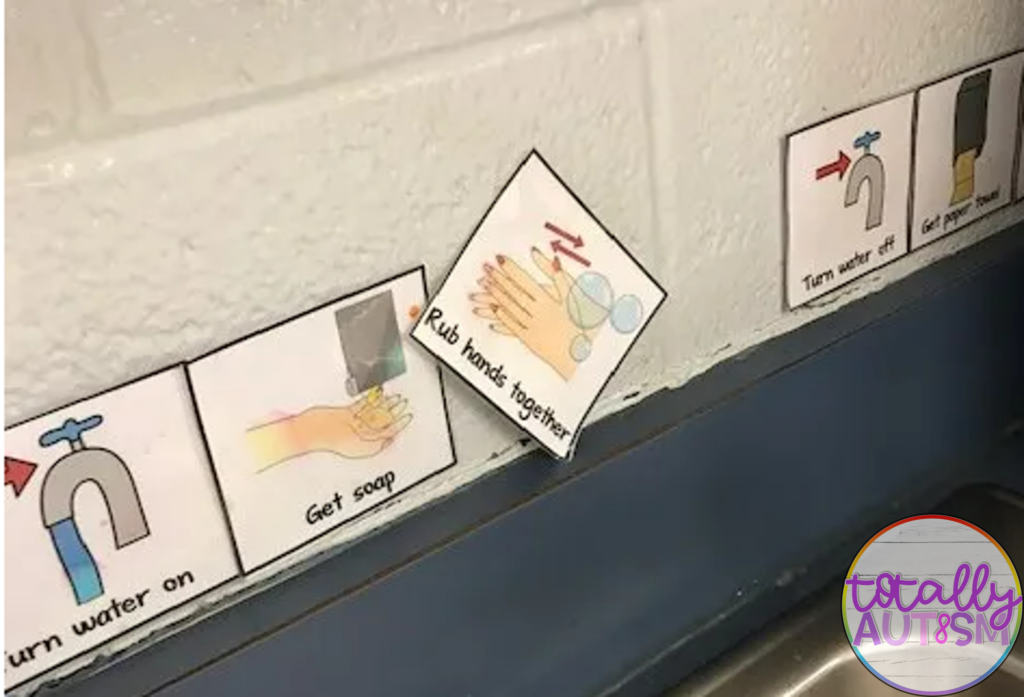I am excited to introduce this week’s guest blogger, Kristina, from Totally Autism, to share all about visual schedules for autism classrooms!

Visual schedules for autism are invaluable tools in a classroom, providing clear guidance and fostering student independence. Let’s delve into three must-have visual schedules that can transform the daily routines of your students and enhance their learning experience. Visual schedules help autistic children.
The process of unpacking in the morning and packing up at the end of the day involves numerous steps, and breaking down each step is crucial. Consider physically performing each action yourself to create an effective visual routine schedule. Some students benefit from real pictures of their environment. Capture real-life photographs of each step! You could also utilize resources such as LessonPix if you don’t have time to snap photos. This year, my unpacking routine has been meticulously detailed, streamlining transitions and reducing stress for my students. Below is a visual schedule I have used.

Additionally, incorporating a visual routine schedule not only aids in the physical act of unpacking and packing up but also promotes independence and self-regulation among students. As they become familiar with the routine, they gain a sense of control and predictability in their daily activities. This is particularly beneficial for students with special needs, providing them with a structured environment that minimizes anxiety and promotes a sense of security.
Visual cues, whether through photographs or symbols, serve as powerful tools to reinforce the steps of the routine, fostering a positive and organized start to the day and a calm and orderly end, setting a positive tone for the entire learning experience. Visual schedules for autism can be such a meaningful tool.
Another critical routine for students with autism is bathroom and handwashing procedures. It’s a common IEP goal that warrants visual schedules for autism near sinks and the bathroom. You can tell that my handwashing routine has been used for a long time! Visuals don’t always have to be pretty; they must be functional. It’s better to have one, than none at all. Align your data collection with the outlined steps to monitor progress effectively.

Creating a visual schedule for bathroom and handwashing procedures is indispensable for students with autism. The visual schedule serves as a clear guide, breaking down each step of the process into manageable parts. This visual support not only reinforces the routine but also aids in developing essential life skills. Consistency is key, and the longevity of your handwashing routine visual is a testament to its effectiveness. The functionality of visuals is paramount, prioritizing clarity and simplicity over aesthetics.
By aligning your data collection with the outlined steps, you not only monitor progress effectively but also ensure that the visual schedules for autism remain a dynamic and responsive tool that evolves with the student’s needs and abilities. Why not try to create some visual supports and schedules?
Finding My Way in My Own Autism Discovery
Streamline academic tasks and empower your students by implementing work sequence visual schedules for autism. Instead of relying on verbal instructions, provide a visual roadmap for tasks. Create a laminated schedule base with velcro, allowing you to arrange task-specific visuals in a logical order. This method has proven to be a game-changer in my classroom, reducing the need for constant verbal cues.

I love using these visual cues when students complete independent work, but they also work great during small-group instruction. These visuals allow me to help more students and focus on different skills when completing a small group activity. Students become more independent with the mechanics of putting the task together (cutting and gluing), while I can help students with the actual skill to be worked on.
Implementing work sequence visuals in your classroom is a powerful strategy to streamline academic tasks and foster student empowerment. Instead of relying solely on verbal instructions, a visual roadmap provides a clear and structured guide for students. By creating a laminated schedule base with velcro, you offer a customizable and dynamic system where task-specific visuals can be arranged in a logical order.
Supports and visual schedules can be so impactful. This approach has been transformative in my classroom, notably reducing the need for constant verbal cues. I find these visual cues especially effective during independent work sessions and small-group instruction. They not only promote independence in task completion but also enable me to assist more students during small-group activities. Students become adept at the mechanics of assembling the task, such as cutting and gluing, allowing me to focus on refining and reinforcing specific skills with individual students. I hope you try some of these visual schedules for autism.
Instagram | TeachersPayTeachers | Facebook | Boom Learning Library | Pinterest | Youtube
What are you looking for?
COPYRIGHT © 2025 Full SPED Ahead